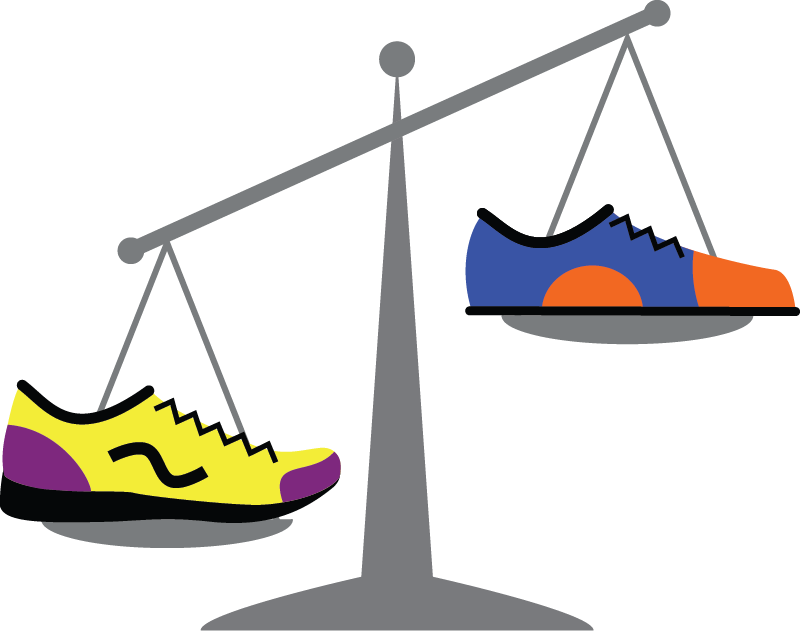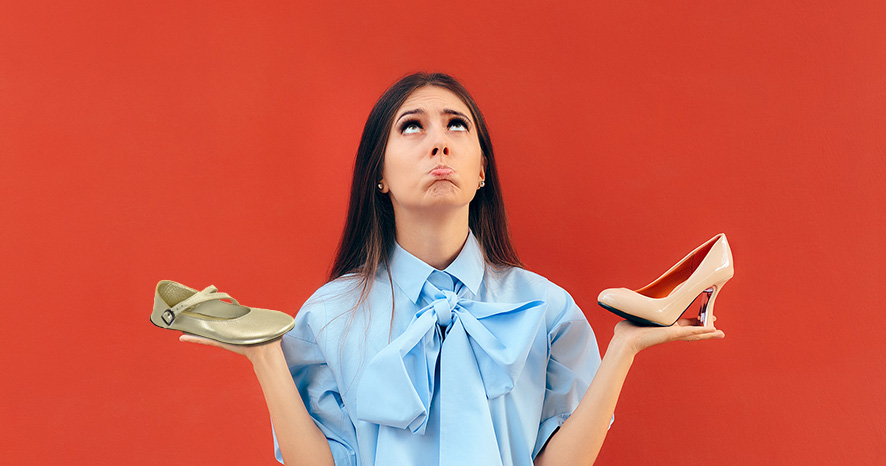Five Criteria to Help Choose Barefoot Shoes
At Softstar Shoes, we know barefoot is best! Over millions of years, humans have adapted to living and running with bare feet. Footwear design trends over the last century have shifted towards creating barriers between our feet and the ground, but going back to being barefoot isn’t always possible. For example, sometimes the added protection of shoes is necessary. That’s why we make barefoot shoes. Many shoes on the market claim to be minimal, but not all are barefoot-friendly. Here are a five criteria to help choose barefoot shoes.
1. Zero Drop

Heel-toe drop is the difference between the thickness of a shoe’s sole at the heel and the thickness at the toe. Most modern shoes add thick cushioning under the heels of shoes, encouraging people to strike the ground heel-first when running and walking. This creates a harsher, more jarring impact than the midfoot or forefoot-first way most people walk and run when barefoot. Look for shoes that are as close to zero-drop as possible!


2. Lightweight
Heavier shoes not only require more energy to lift, but add more strain on your joints because of the additional torque needed to move around in them. The lighter the shoe, the better!

3. Thin and Flexible Soles
Barefoot shoes encourage natural movement by bending to the shape of your foot. They offer more freedom of movement and groundfeel. Your feet relay information to your brain about what they sense when you walk and run, then your body reacts accordingly. Thick and rigid soles can block this proprioceptive information. Keep soles skinny and bendy!


4. Wide Toe Box
The toe box is the space in the front of a shoe that surrounds the toes. Conventional shoes tend to have narrow or pointed toe boxes based on the idea that this is more fashionable. But if the toe box constricts the foot and does not allow toes to splay, then the shoe is inhibiting natural movement, balance, and growth. Look for shoes that allow your toes to spread fully, and consider wearing toe spacers if you want help restoring foot muscle strength and stability!
5. No Arch Support
Typical modern shoes add arch supports and even heel cups touted to improve stability or motion control. Arch supports were originally developed based on the belief that they relieve foot fatigue and cure a broad range of disorders. However, recent studies suggest that arch supports may increase chances of injury by acting as crutches that weaken arches over time. Feet that are adjusted to barefoot shoes do not need arch support because the plantar muscles in the foot are naturally strong and able to flex properly. That being said, if you are new to barefoot shoes, go slow! Transitioning too quickly can lead to injury.

None of this information is intended to be used as medical advice.
HTM Elf Benjamin has been a graphic and web designer for 15+ years and came to Softstar in 2021. He made the switch to zero-drop shoes in 2016 after years of arch pain from running in conventional footwear, and hasn’t looked back. He has an art degree from Portland State University and enjoys minimalist shoes for hiking and gardening.


